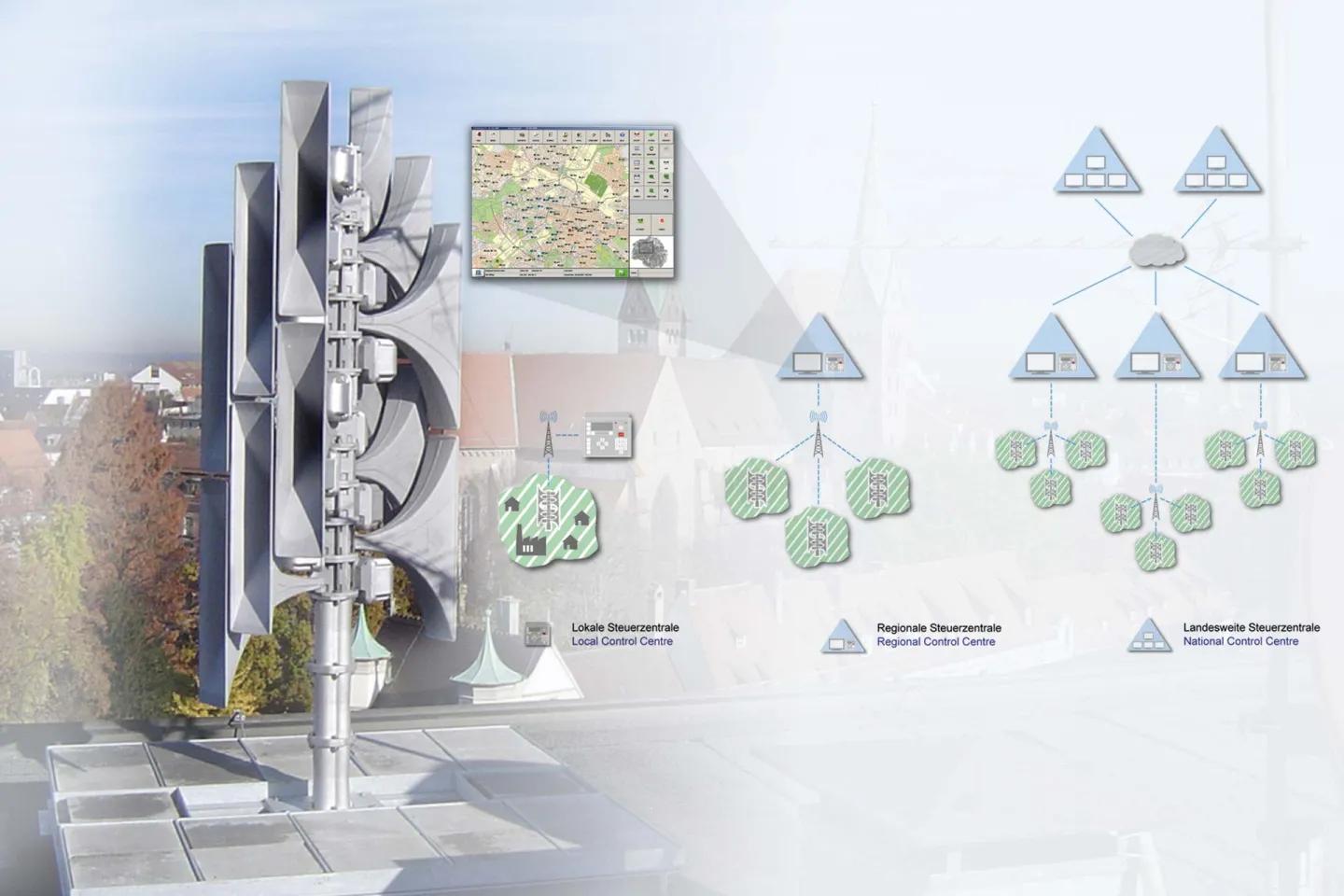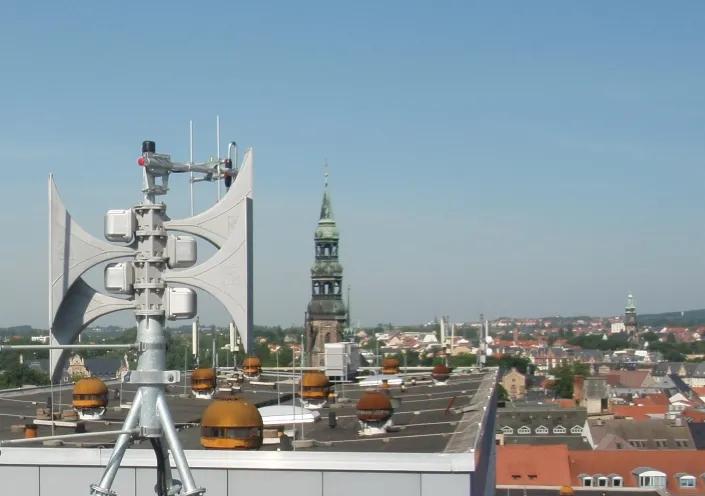
Warning System for Cities and Municipalities
Civil protection in cities – sirens provide a quick warning in the event of a disaster
In Germany, warning the population in the event of disasters and other dangers is a state issue. The federal government is only responsible for civil protection in matters of defence. Around 80,000 sirens were in use up to the end of the Cold War. Back then, there was still a national siren network. These sirens were largely dismantled at the start of the 1990s for cost reasons. Germany has not had a nationwide siren network ever since. Only municipalities that took over the costs for the network kept their sirens. In Austria too, many cities and municipalities operate their own siren networks.
The higher incidence of natural disasters, such as floods or hurricanes, as well as major fires or toxic substances in the air, which has made systems for alerting civilians necessary, has triggered a change in approach. Cities and municipalities, supported by their respective countries, have been constructing siren networks over recent years. Sirens are an essential part of a civil protection concept when you need to warn your civilians of an emergency quickly and reliably. They also let you reach people who may not have their radio on or their mobile phone with them or who are not connected to the internet. Sirens that not only warn, but also inform. In addition to siren alarms, sirens in some siren networks can also be used to output voice messages or radio announcements.
Requirements for regional siren warning systems:
- Suitable for warning the public, but also for alerting fire services
- Can be integrated into multi-level siren networks, for example regional or national
- Connection option or flow of information between private warning systems, such as in plants at risk of major incidents, and the city warning systems
- Multi-level control centre infrastructure possible
- Can be integrated into warning concepts such as MoWas (Federal Modular Warning System) and into the analogue or digital BOS radio network of the respective country
- Alternative communication options, e.g. via analogue UHF/VHF radio, DMR, TETRA, VPN, GPRS
- Cost-effective to operate
- Easy to maintain and long-lasting
Individual planning for the optimal urban siren system
Sirens have technically developed in the last few years. Accordingly, it is necessary taking into account all important parameters (sound pressure, building development, ambient noise, site conditions, etc.) to select the right locations where to install the electronic sirens. Our specialists therefore plan each siren system individually and thus find both the optimal locations and the appropriate electronic siren models. In addition to location criteria such as hazards, immission, topographical, meteorological and structural conditions, economic aspects are also taken into account.
In urban warning systems, often there is also a kind of dual use, with some electronic sirens being used specifically to alert the fire department. In addition to a central control center, which monitors and manages the entire siren system, the fire department sirens are often triggered by a simple local control unit at the push of a button. Sometimes loudspeakers can also be integrated in buildings to warn the fire department.
In addition to radio, the activation of the sirens via a dedicated line is also a common method. Communication connections such as VPN or GPRS are also possible. Of course, the individual communication media can also be combined to increase the reliability of a system. The experts at HÖRMANN Warnsysteme were not only involved in the development of the siren network in Germany at that time, but can also draw on the experience of a number of installed mass warning systems in cities and municipalities in Germany and abroad.

